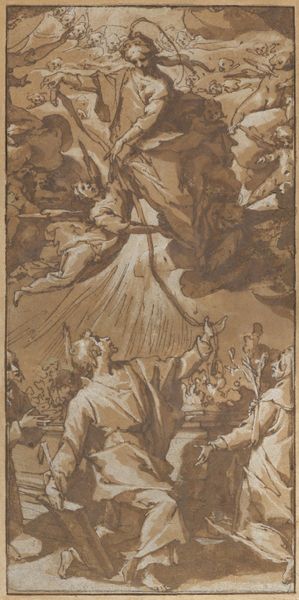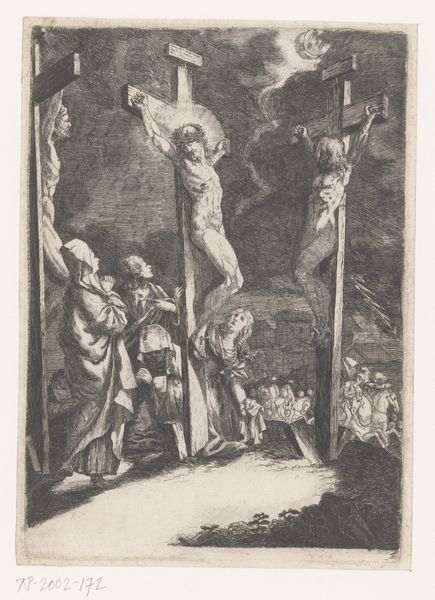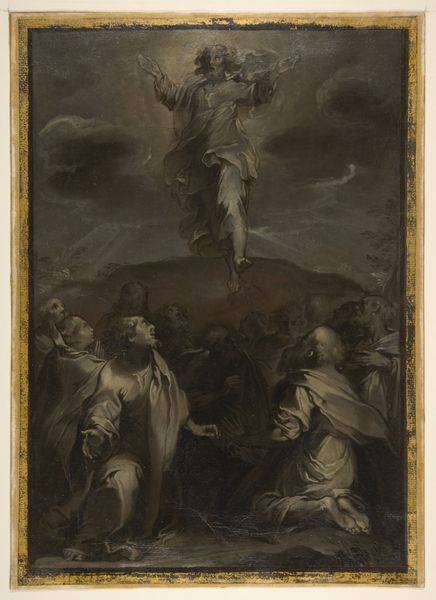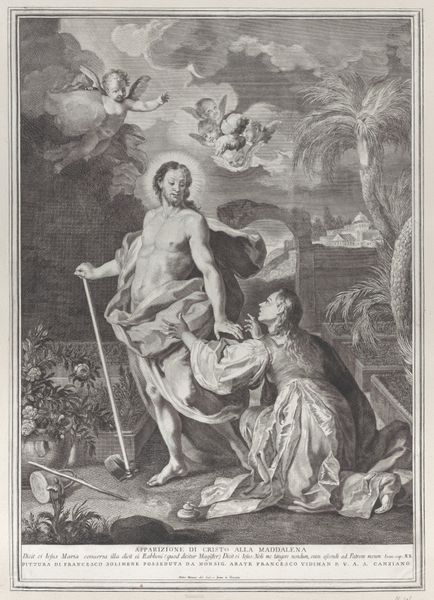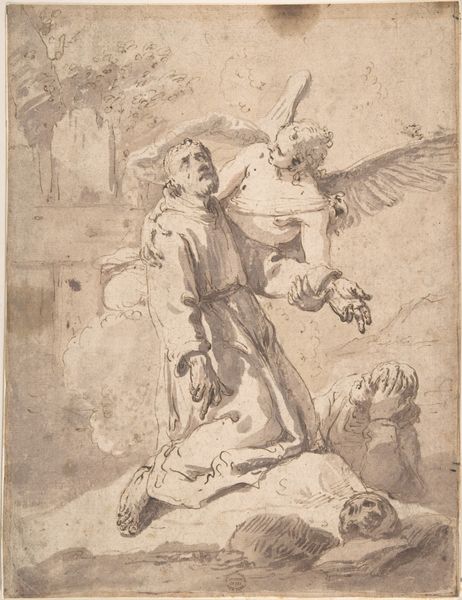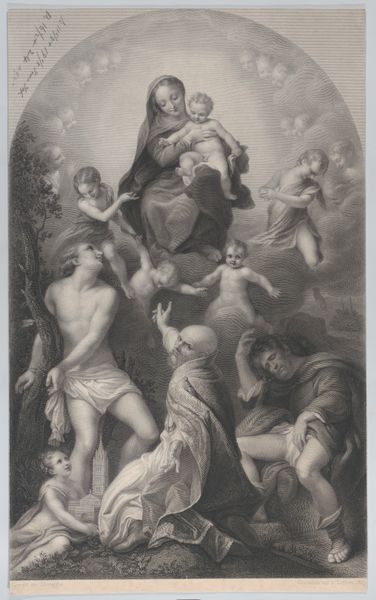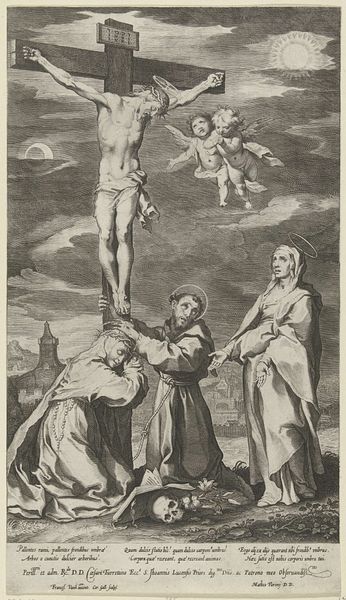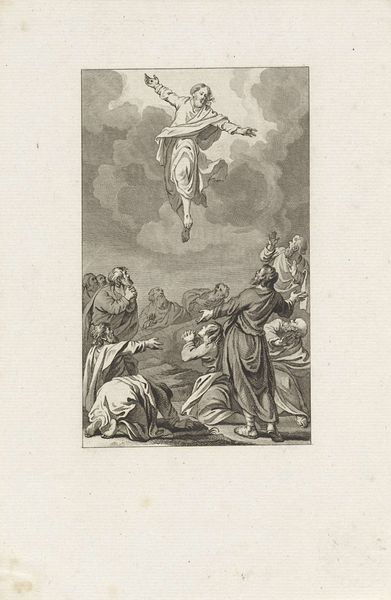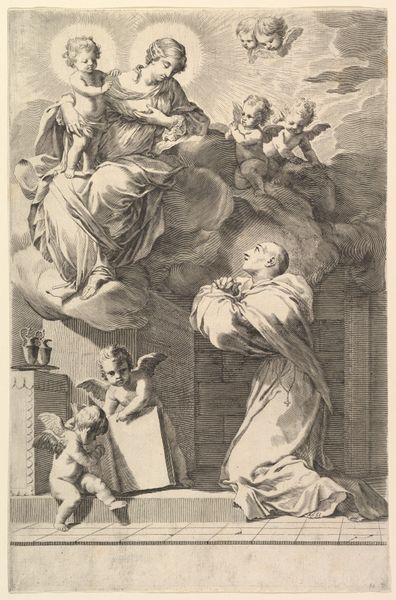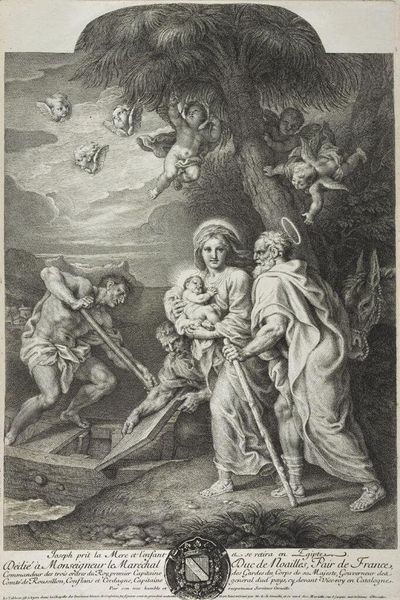
painting, oil-paint
#
narrative-art
#
baroque
#
painting
#
oil-paint
#
figuration
#
11_renaissance
#
oil painting
#
history-painting
Dimensions: 14 × 8 1/8 in. (35.5 × 20.7 cm)
Copyright: Public Domain
Editor: "The Resurrection" by Bartholomeus Breenbergh, dating from around 1635. Painted in oils, it's got this dramatically lit scene—very Baroque. The figures feel weightless, ethereal. What do you see in this piece? Curator: What I find striking is the confluence of triumphal imagery. Christ, bearing the banner—a symbol of victory over death itself—ascends amidst cherubic faces, seemingly weightless. But consider the counterpoint: the fallen soldiers, oblivious, and the pensive angel. Does that contrast speak to you? Editor: Absolutely. It’s this dichotomy, the glorious and the mundane, side by side. The soldiers are literally knocked out, missing the whole event. Curator: Precisely! They are the embodiment of disbelief, perhaps? The standard Christ carries isn't just any flag; it’s loaded. White symbolizes purity, innocence, triumph, while the red cross proclaims Christ’s sacrifice. It speaks of spiritual conquest, and an eternity beyond earthly confines. Notice how it cuts diagonally across the composition, disrupting the slumber below. What is the psychological weight? Editor: I'm guessing a visual symbol for the disruption of the established order by faith? The sleepers could even represent doubt. Curator: Beautifully put! It's a layered visual narrative about power, belief, and the subversion of mortal expectations through this moment of resurrection, a core motif in religious visual culture for centuries. Consider what continuities of faith these Baroque visual strategies have created! Editor: I hadn't thought of it that way, seeing the flag not just as a symbol of victory, but one that signifies disruption and challenges existing beliefs. That shifts my perspective on the painting entirely! Curator: Exactly, the enduring power of images lies in their capacity to challenge and reshape understanding across time.
Comments
No comments
Be the first to comment and join the conversation on the ultimate creative platform.

